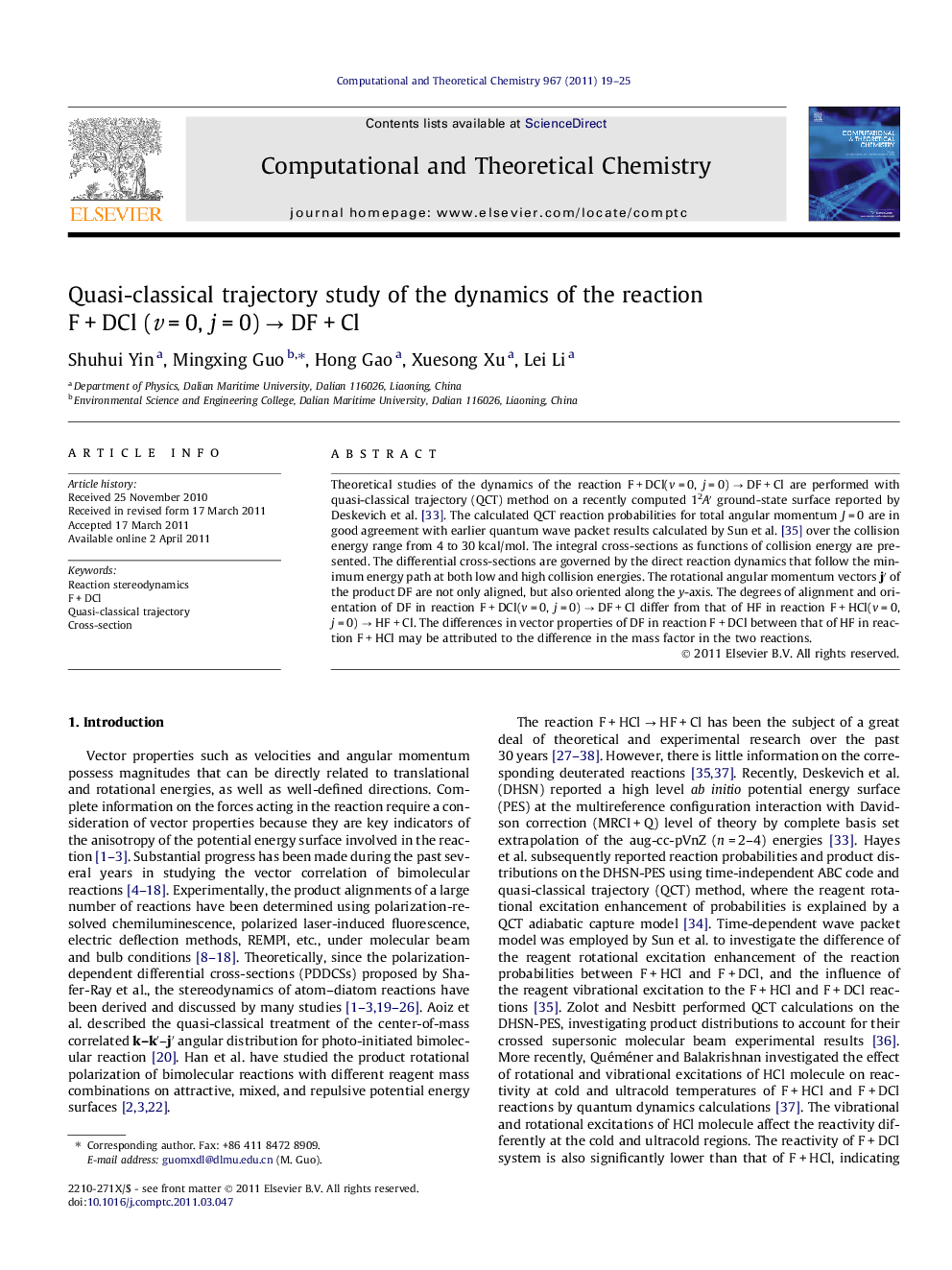| Article ID | Journal | Published Year | Pages | File Type |
|---|---|---|---|---|
| 5395118 | Computational and Theoretical Chemistry | 2011 | 7 Pages |
Abstract
Theoretical studies of the dynamics of the reaction F + DCl(v = 0, j = 0) â DF + Cl are performed with quasi-classical trajectory (QCT) method on a recently computed 12Aâ² ground-state surface reported by Deskevich et al. [33]. The calculated QCT reaction probabilities for total angular momentum J = 0 are in good agreement with earlier quantum wave packet results calculated by Sun et al. [35] over the collision energy range from 4 to 30 kcal/mol. The integral cross-sections as functions of collision energy are presented. The differential cross-sections are governed by the direct reaction dynamics that follow the minimum energy path at both low and high collision energies. The rotational angular momentum vectors jâ² of the product DF are not only aligned, but also oriented along the y-axis. The degrees of alignment and orientation of DF in reaction F + DCl(v = 0, j = 0) â DF + Cl differ from that of HF in reaction F + HCl(v = 0, j = 0) â HF + Cl. The differences in vector properties of DF in reaction F + DCl between that of HF in reaction F + HCl may be attributed to the difference in the mass factor in the two reactions.
Related Topics
Physical Sciences and Engineering
Chemistry
Physical and Theoretical Chemistry
Authors
Shuhui Yin, Mingxing Guo, Hong Gao, Xuesong Xu, Lei Li,
